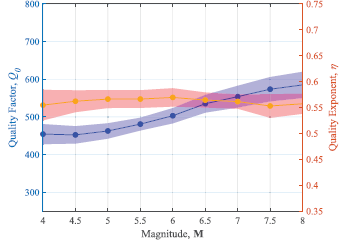
Principal Engineer Arash Zandieh published a paper in Earthquake Spectra with Prof. Shahram Pezeshk titled “An equivalent point-source stochastic model of the NGA-East ground-motion models.” They estimated seismological parameters in Central and Eastern North America (CENA), including the geometrical spreading, anelastic attenuation, stress parameter, and site attenuation parameters. Based on their analysis, they developed a single stochastic ground motion model (GMM) that yields pseudo-static spectral acceleration values similar to the median NGA-East GMMs.
Abstract: The main objective of this study is to estimate seismological parameters in Central and Eastern North America (CENA), including the geometrical spreading, anelastic attenuation, stress parameter, and site attenuation parameters. In this study, we use particle swarm optimization (PSO) to invert a weighted average of the median 5%-damped pseudo-spectral acceleration (PSA) predicted from the Next Generation Attenuation-East (NGA-East) ground-motion models (GMMs) to develop a point-source stochastic GMM with a well-constrained set of ground-motion parameters. Magnitude-specific inversions are performed for moment magnitude ranges M=4.0–8.0, rupture distances Rrup=1–1000km, and periods T=0.01–10s, and National Earthquake Hazard Reduction Program site class A conditions. The result of this study yields a single stochastic GMM that yields PSA values similar to the median NGA-East GMMs. The parameters derived from this study can be used for the hybrid empirical method (HEM) applications. This study is the first to perform a formal inversion using the GMMs developed for the NGA-East project. The approach has been validated using simulated small-to-moderate magnitude and large-magnitude data derived from the NGA-West2 GMMs.
Link to article: https://journals.sagepub.com/doi/abs/10.1177/87552930231225983
